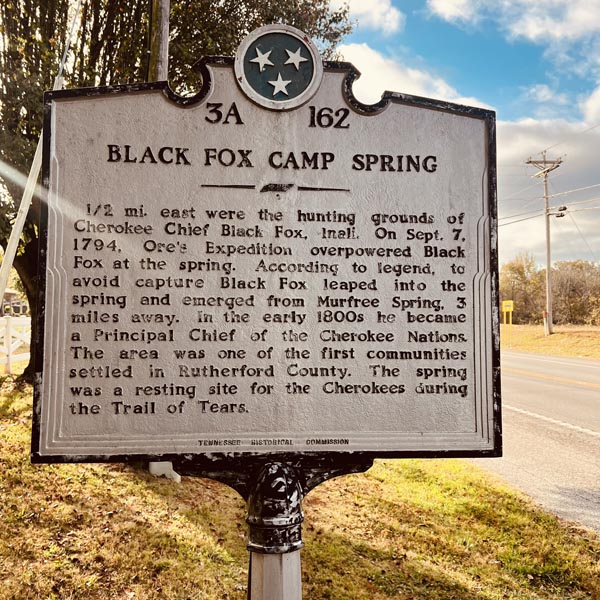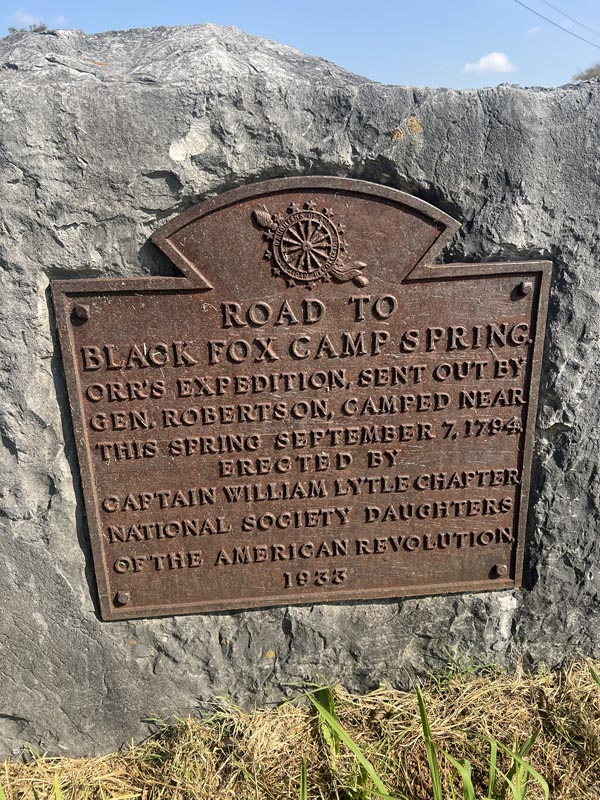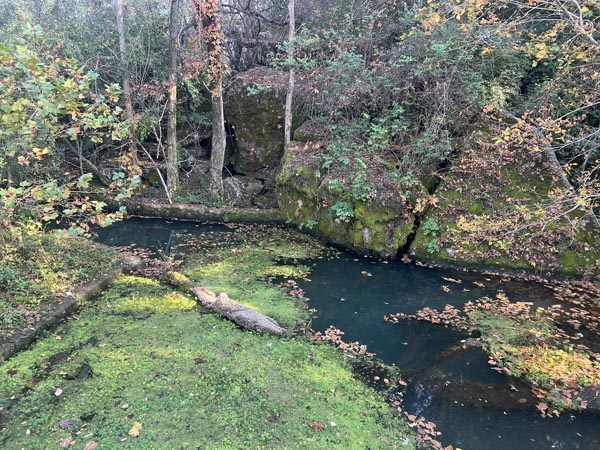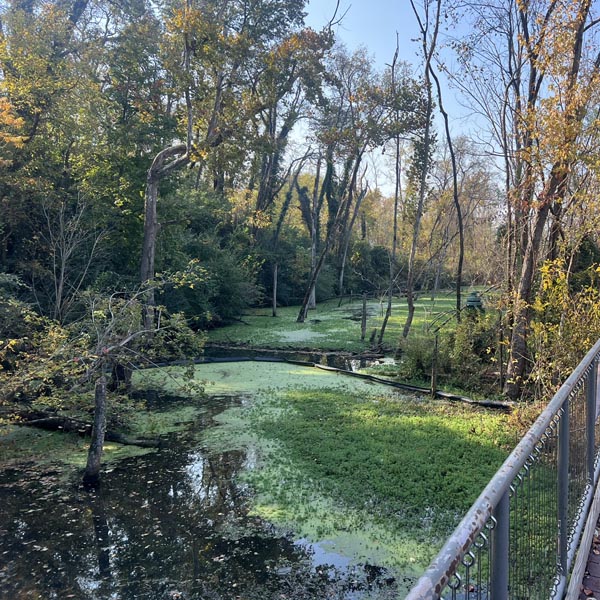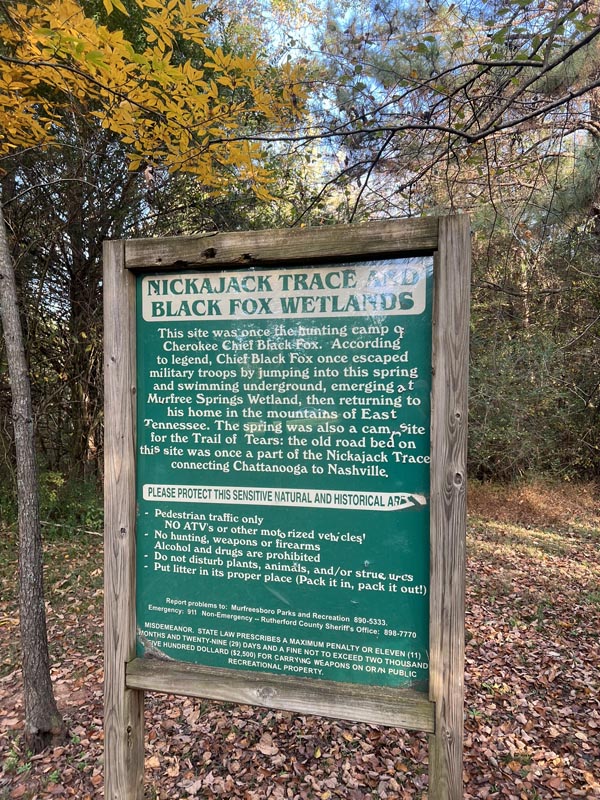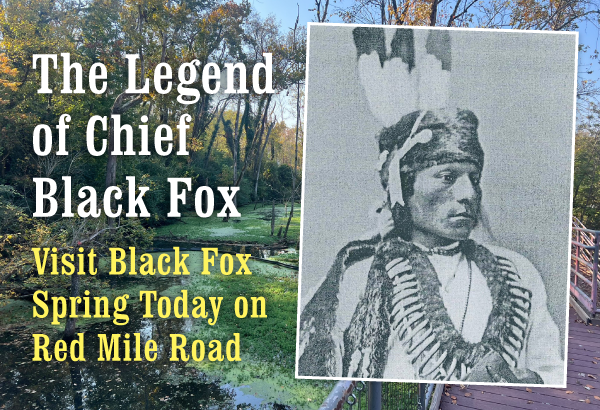
Hello, everybody. I hope everybody is getting ready for the holidays. When I think of Thanksgiving I think about the Pilgrims and Indians of 1621 having a huge feast.
With that being said, the first Indian I think of around these parts is Chief Black Fox. So, this month why don’t we talk about Chief Black Fox and his connection to the Murfreesboro area?
Chief Black Fox (c. 1746–1811), also known as Enola, was a Cherokee leader during the Cherokee–American wars (1776–94). He was a signatory of the Holston Treaty of 1791, which set boundaries between the U.S. and Cherokee. He later became a Principal Chief of the Cherokee Nation.
In 1801 Black Fox was named by the council of chiefs of the Lower and Upper Towns to succeed Little Turkey as Principal Chief of the original Cherokee Nation. The majority of Cherokee at that time lived in the Lower Towns (lower little Tennessee River). They were more isolated from European-American contact and tended to be more conservative, maintaining traditional practices and language.
During his term in office, Black Fox was the leading negotiator for the Cherokee people with the United States federal government. He is noted for relinquishing nearly 7,000 square miles of land in what is today Tennessee and Alabama, under the treaty of Jan. 7, 1806, for which he was given a lifetime annuity of $100. A controversial leader, Black Fox was deposed for a period, only to later be reinstated as Principal Chief in a compromise between two regional factions of Cherokees.
Now, what’s his connection to Murfreesboro and Rutherford County?
Black Fox Spring is located between Bradyville Pike and Manchester Highway on Red Mile Road and was used for many years before Tennessee was a state in 1796. French entrepreneurs set up camp at this landmark to trade with the native American hunters. Some of the things they traded for were beaver, fox, mink and other hides from the New World that were in demand for European high fashion.
The spring itself was a deep blue hole, where an underground stream rose to the surface and continues north towards Murfreesboro. This area was named, more than likely, by these French traders for the Cherokee chief who led hunting parties and traded with the French all around this area. Black Fox himself “formerly hunted and encamped at the spring not far from the spot where now is the site of Murfreesboro,” according to Rutherford Reflections by Greg Tucker.
During this time, a friendly Indian known to the settlers as Black Fox, with a few associate hunters, was camping and hunting upon land recognized by the recent treaties as Indian territory, where they sold venison and skins to the settlers.
In 1794 the settlements around the Cumberland, including the Black Fox Spring, were threatened by hostile Creek and Chickasaw parties. In response to that, under the command of Major James Ore, the Army marched on Sept. 7, 1794, to the Black Fox Spring , where they camped for the night without incident.
In 1812 the spring was considered as one of the four possible sites for Murfreesboro, but it was the first to be dropped from consideration. From 1803 to 1813 Black Fox Spring was the voting precinct for the southern half of the county, but this role was moved to Murfreesboro at the first meeting of the quarterly court in the new county seat in January 1813.
The Black Fox Spring settlement began to decline as private landowners began farming the area.
Stories have been passed down through the generations regarding Chief Black Fox. One in particular is that he was overpowered by some enemies and, rather than fall into their hands, he leapt into the spring and sank from sight. The story would have been incomplete, had he not come to light again. According to tradition, Black Fox emerged alive at Murfree Spring, which is near the Discovery Center on Broad Street. Some even allege that this superhuman escape occurred during the campaign led by Major Ore.
If you are from this area you probably know that the Black Fox Elementary School on South Rutherford Boulevard is named after Chief Black Fox. Black Fox is also mentioned in White, Bradley, Claiborne and Grainger counties in Tennessee. So one could say that not only were the Long Hunters here hunting, but the Cherokee, including Chief Black Fox, were certainly roaming the Tennessee area as well.
If you wonder whether Chief Black Fox would have shopped at Kroger or Publix, I’m guessing Publix, since it is directly next to his school namesake.
However, the Black Fox Spring winds its way underground and deposits into a marsh behind the old Kroger off of the Bradyville Pike entrance. It was interrupted in the 1930s when Todd’s Lake was formed nearby on South Rutherford Boulevard.
Today, you can still visit Black Fox Spring on Red Mile Road in between Manchester Highway and Bradyville Pike. Some of the old Indian trails are still there.
Then, go to Murfree Spring at the Discovery Center on Broad Street to give you some perspective on how far Chief Black Fox would have had to swim underground.
I hope everybody has a happy Thanksgiving. Always remember to go out and do something nice for someone else.
___
I’d like to thank Greg Tucker, our county historian. A lot of the information from this piece came from his book, Rutherford Reflections, which you can purchase at the Rutherford County Historical Society or, if you are cheap like me, check out at the Linebaugh Library.



